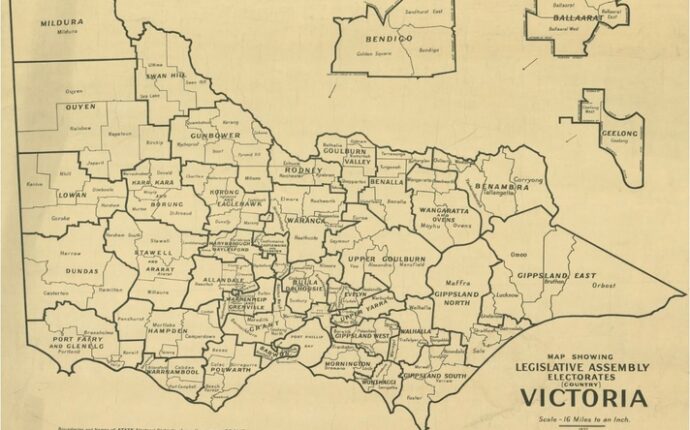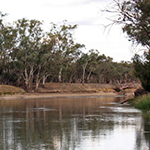Victorian Maps
Sections of Victoria will benefit from, and be welcome to, being part of The Riverina.
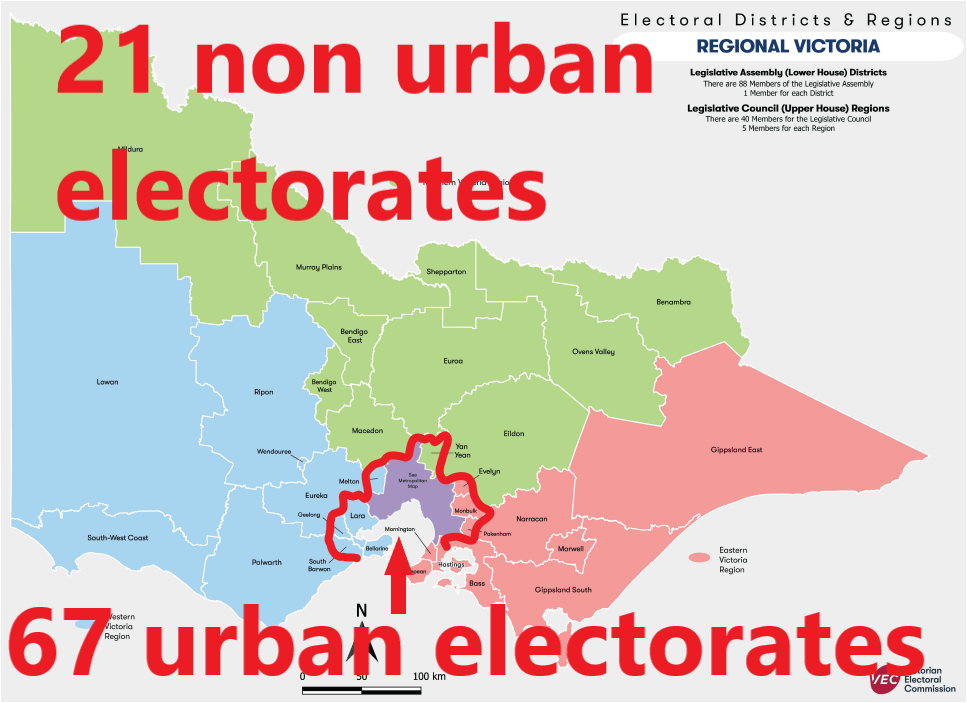
Of the 88 Victorian State electorates and consequent Members of Parliament, 67 are in the metropolitan area marked, while 21 are in the rest of the State. Victoria is insurmountably dominated by its urban population.
.
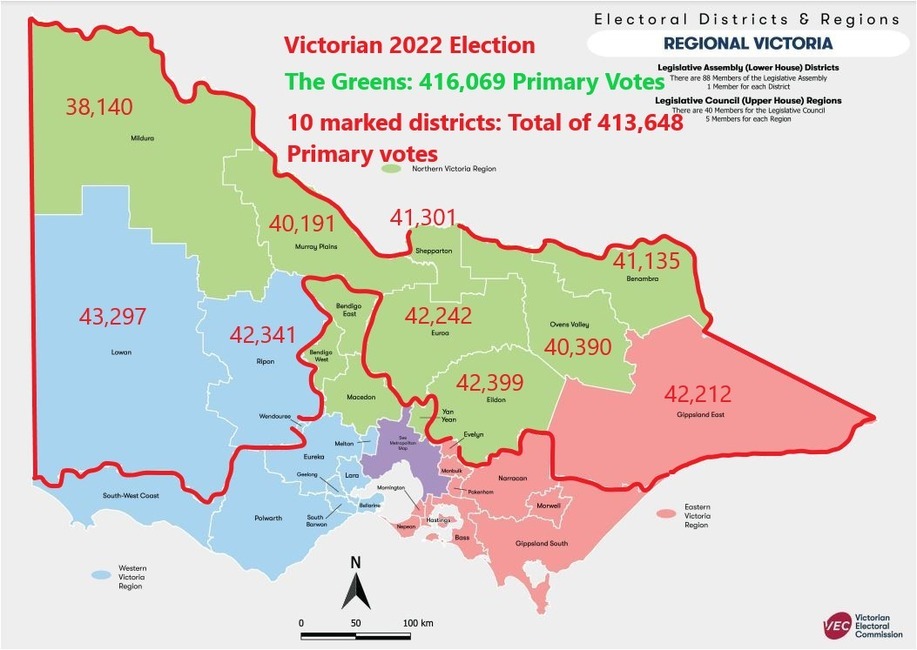
There are more Green voters in Victoria opposed in varying degrees to all natural resource based activities, with the vast majority in metropolitan Melbourne, than the total number of voters in the ten electorates marked. This large number of Green voters ensures the decline in natural resource based industries such as irrigation, timber harvesting and mining, and the consequent decline in economic activity and employment in country Victoria.
.
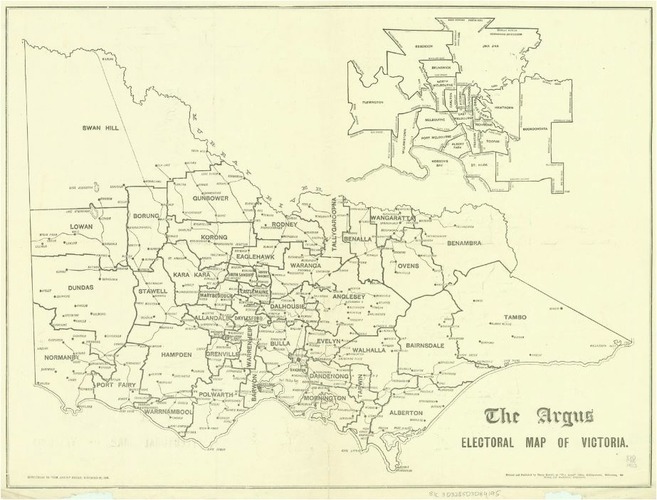
Country representation in the Victorian Parliament is declining rapidly.
In the first Victorian State election in 1904, of the total of 68 electorates (and consequent Members of Parliament), 23 (34%) were in the metropolitan areas of Melbourne and Geelong, and 45 (66%) were in the non-metropolitan area.
Due to electorates being based on equal population (within 10% of the average) and most population growth being in the urban areas, since 1904 until the most recent redistribution in 2014, the number of country electorates has declined from 45 to 21, with 24 electorates evaporating from the country and condensing into the expanding metropolitan Melbourne, Geelong and the now urban Mornington Peninsula.
Further, between 1955 to 1985 an additional 20 electorates (and consequent politicians) were created; all in metropolitan Melbourne, Geelong and the Mornington Peninsula.
Of the current 88 Member Parliament, 67 (76%) electorates, and consequent Members, are in the metropolitan area, while 21 (24%) are in the country.
Since 1904, the expanding metropolitan Melbourne, Geelong and the Mornington Peninsula has gained 44 electorates and Members of Parliament, while the non-metropolitan area has lost 24.
Percentages (to allow for the creation of the 20 new electorates) may be used to calculate the decline in the number of country electorates. The country areas of Victoria previously contained 45 of the original 68 electorates, being 66%. Of the current 88 electorates, 66% is 58 electorates. The decline from 58 electorates (the same percentage of electorates in 2014 as in 1904) to the current 21 is 37 electorates. Losing 37 electorates in the 110 years from 1904 until the last redistribution in 2014 equates to country Victoria losing one electorate every 3 years.
If the country areas continue to lose one electorate and Member of Parliament every 3 years, in the next 60 years country Victoria will have only 1 (1.1%) Member of the Victorian Legislative Assembly.

While Victoria may choose to repeat what it has done in the past and preserve some country electorates by adding more urban electorates so as to maintain electoral population equality, the proportional affect will not be changed; in 60 years country Victoria will have only 1.1% of the membership of the Victorian Parliament.

